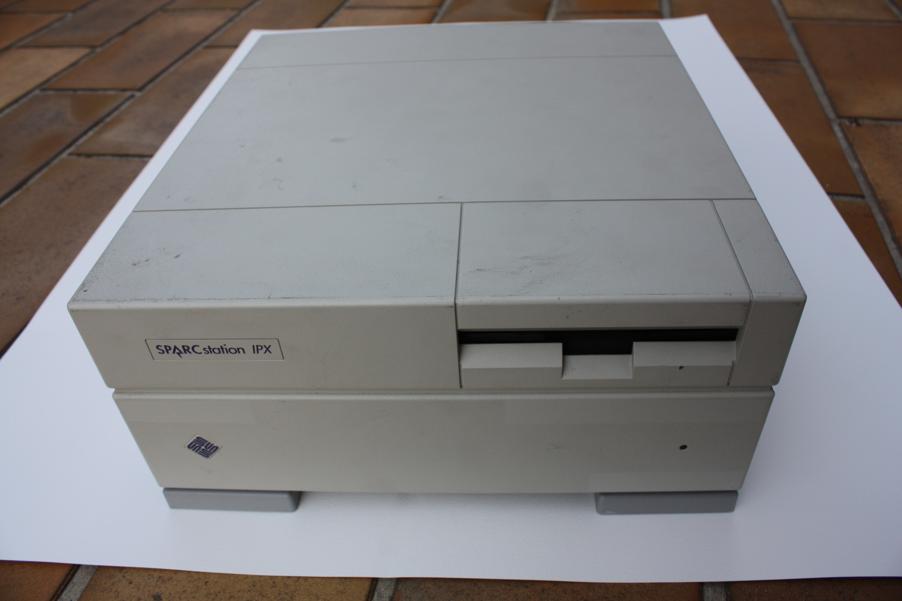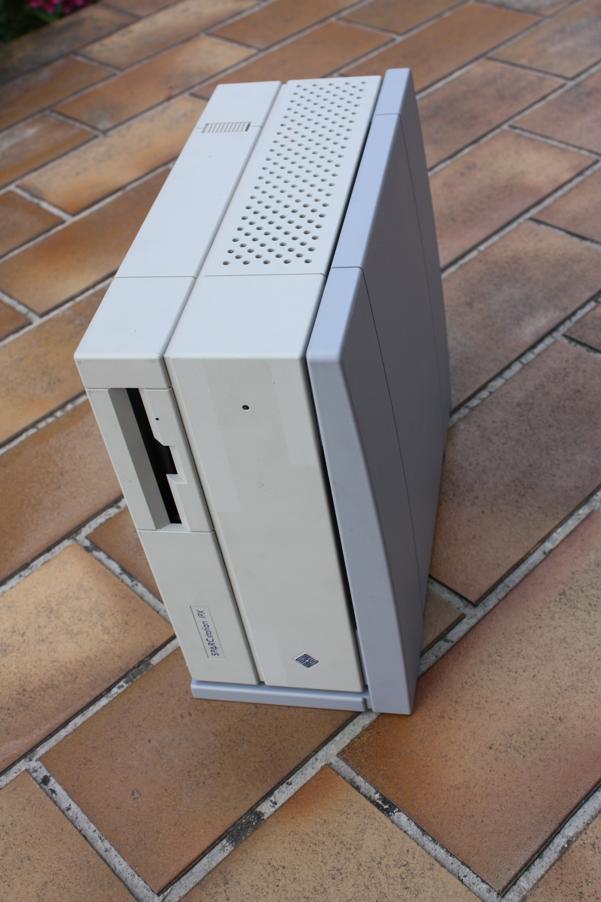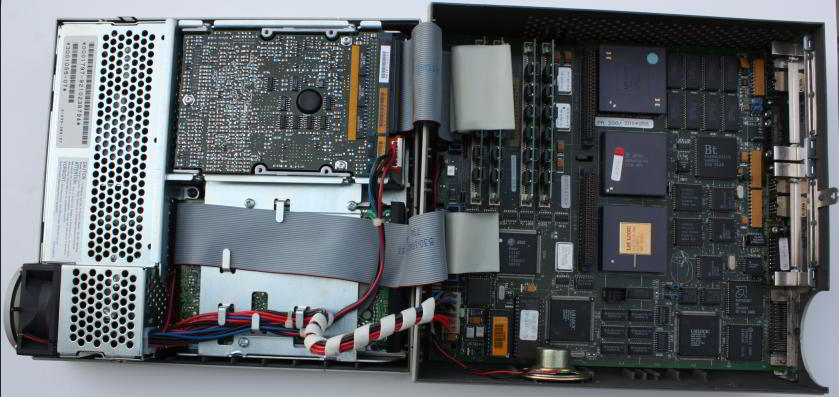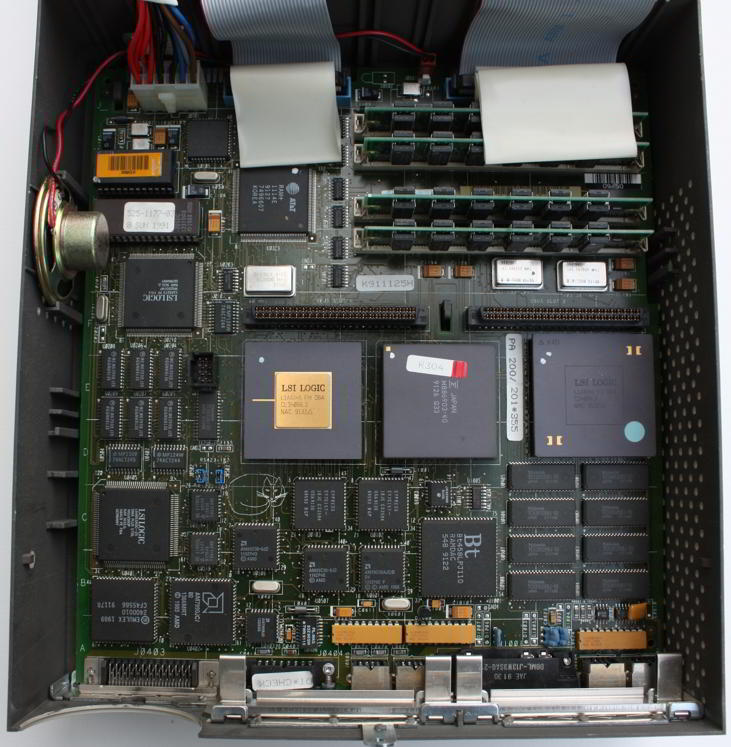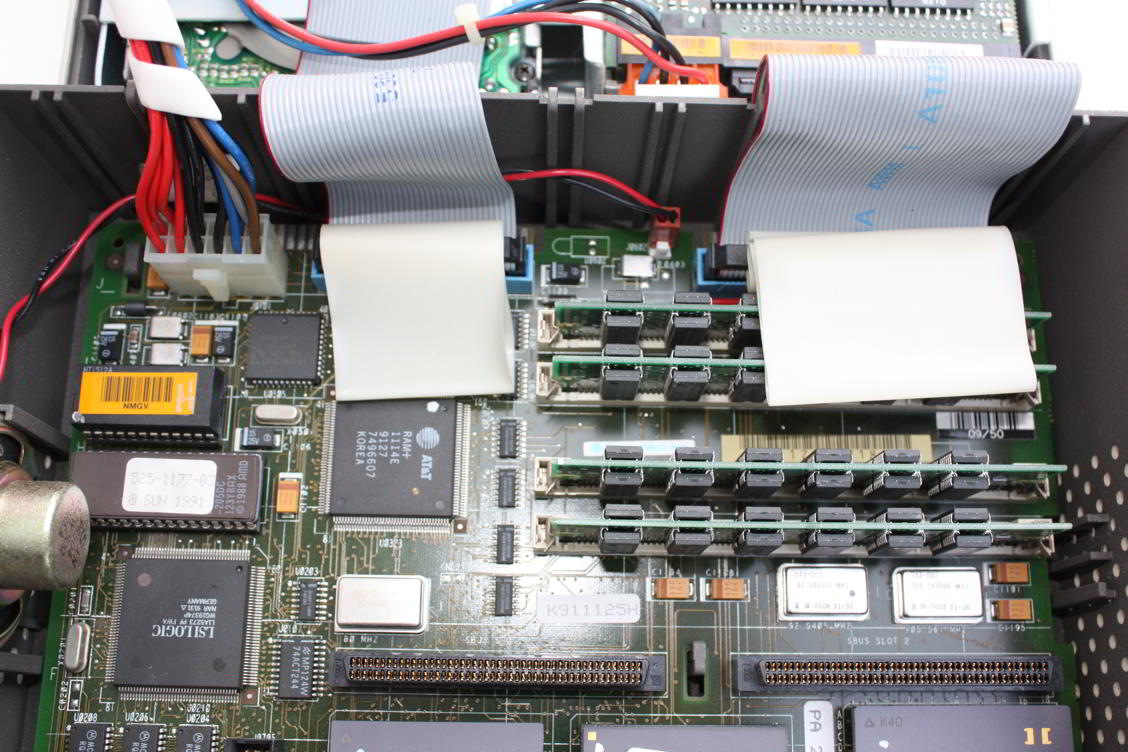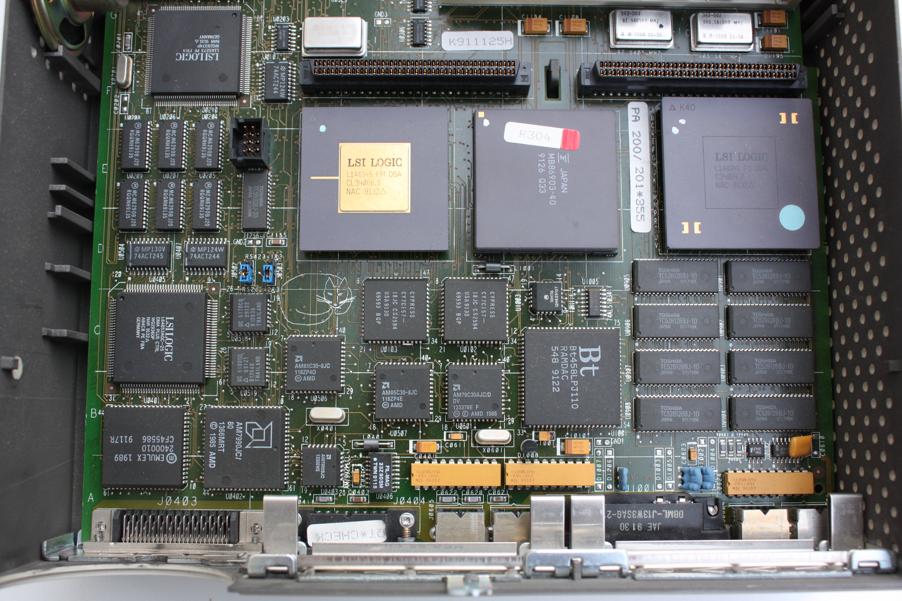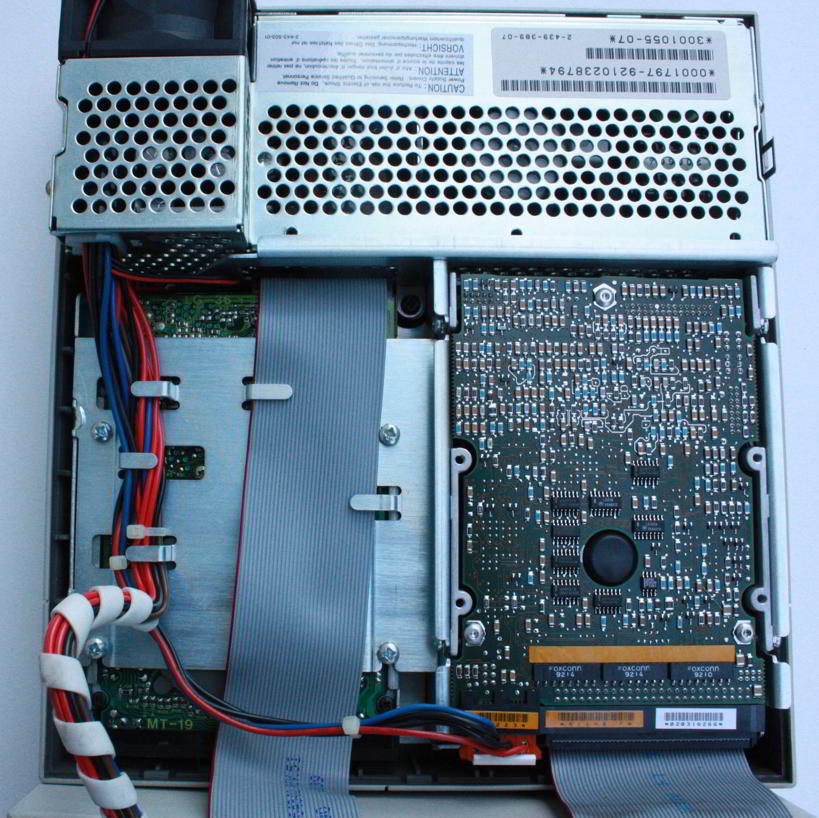Story:
In size, the SPARCstation IPX is one of the smallest
workstations in my collection.
I was given this system during my studies by the "Digital
Signal Processing Group" of the department "Electrical
Engineering" of Darmstadt, Technical University.
This SUN workstation was used as a small DHCP-server before
being shut down at the department.
It's amazing, how densely it is packed! And everything is in
there, you'd want regarding peripherals.
Several years ago, I paned to use it as my internet router,
but the Cobalt Qube 2 finally made the job, back then.
